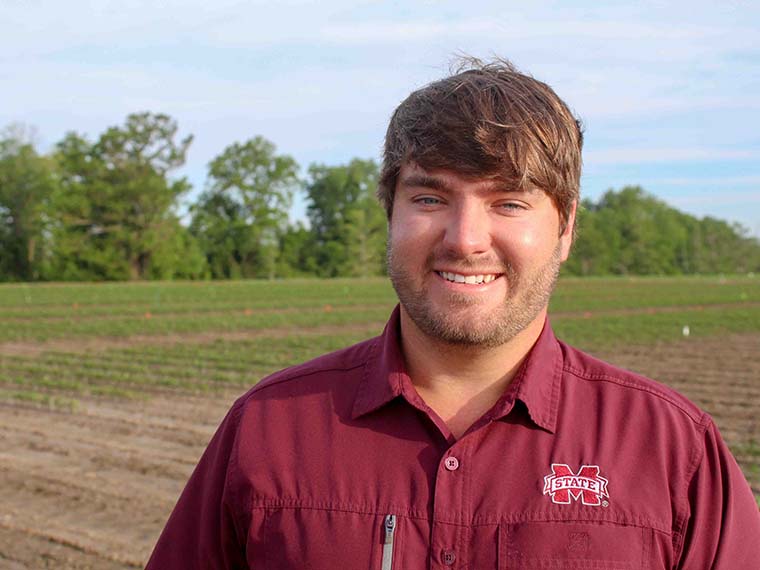Growing up on a family farm in the heart of the Mississippi Delta, Jacob Dodd learned early on the importance of problem-solving in agriculture. From a young age, he found himself questioning the way things were done, whether it was looking for better ways to manage weeds in the fields or finding a more efficient way to work on the farm. Now, as a graduate student in Mississippi State University's Department of Plant and Soil Sciences, Dodd is applying that same mindset to research that could directly benefit soybean farmers across the state.
"Even when I was young, I always tried to find a better way to do things on the farm," Dodd said. "That's what drew me to agricultural research—being able to work on solving real-world problems."
Dodd's interest in research began during an internship at Corteva Agriscience where he worked in crop protection. Inspired by the experience, Dodd earned a bachelor's degree in agronomy and integrated pest management at Mississippi State. Upon graduation, he enrolled in the MSU weed science master's program under the guidance of Dr. Jason Bond, research and extension professor in the Department of Plant and Soil Sciences at the Delta Research and Extension Center.
Today, Dodd is working with the Mississippi Soybean Promotion Board (MSPB) on a project that focuses on understanding the effects of residual herbicides on soybean crops. The research is grounded in a concern shared by many Mississippi farmers: do the herbicides applied to keep fields weed-free cause injury to the soybean plants themselves?
"Residual herbicides are sprayed before or just as the crop emerges and helps extend the weed-free period," Dodd explained. "But some farmers were noticing visual injury to their soybean plants and wanted to know if it was affecting their crop yield."
To find answers, Dodd applied different combinations of pre- and post-emergence herbicides—Dual, Outlook, Prefix, Warrant, Liberty, and Dicamba—across various soybean growth stages. The team then tracked plant injury symptoms like chlorosis—insufficient chlorophyll production which leads to yellow leaves—and necrosis—premature death of cells or tissues—and measured overall crop yield.
"The good news is that, based on our first year of data, even though there were visible injuries, there were no significant yield losses," Dodd said.
This kind of research, which is focused on practical outcomes, is exactly what the MSPB is designed to support. Through the soybean checkoff program, Mississippi soybean farmers contribute 0.5% of the market price per bushel sold, with half of those funds staying in-state to fund production research, outreach, and education. The board's goal is to equip farmers with data-driven solutions that increase profitability and sustainability.
Dodd's project reflects the board's mission to address the evolving challenges Mississippi soybean growers face, including variety selection, unpredictable planting conditions, and long-term sustainability concerns.
"This is boots-on-the-ground research," Dodd said. "We're answering the questions farmers are asking today."
As he wraps up his master's program, Dodd hopes to continue conducting applied research that helps Mississippi farmers adapt and thrive. With deep roots in the Delta and a growing body of research behind him, he's already planting the seeds for a lasting impact.
This research is funded by the Mississippi Soybean Promotion Board.

